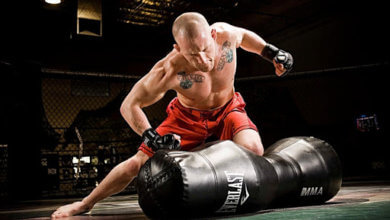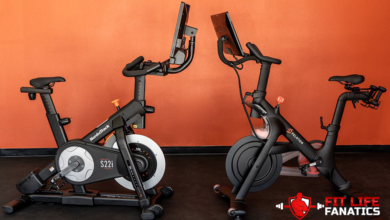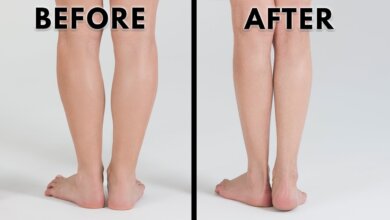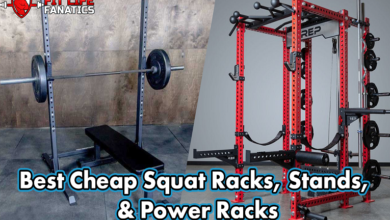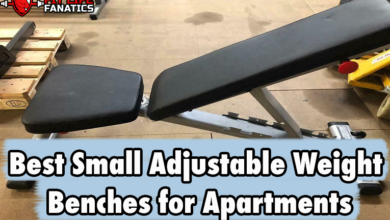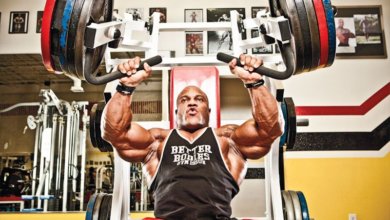Pendlay Rows: How to, Variations, Benefits, Muscles worked, and Alternative Exercises
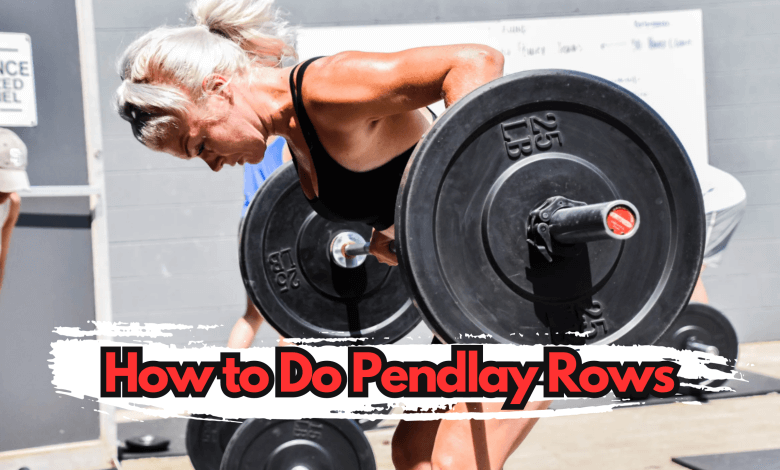
Are you a novice lifter, or an experienced gym rat? No matter your fitness level, there are some essential back exercises that you can (and should) add to your strength-training regimen.
The pendlay row is among the top ones, since, if done right, this exercise can target even some of the back muscles that are the hardest to train.
That should give you a hint as to how effective it can get.
And it sure is effective, at least for me. The pendlay row targets an array of muscles (I will get into that in a moment).
But you need to get it right, with proper form and just the right weight, which is what we’ll be going over in this post.
I won’t leave it at that though. I will also be letting you in on the benefits that you can reap from doing this row, as well as its alternative workouts and much more.
It’s gonna be quite a spin, so strap in let’s get started.
What is the Pendlay Row?

The pendlay row is a variant of the bent-over barbell row invented by Glenn Pendlay, a USA weightlifting coach.
Albeit being quite tough, you need the pendlay row for conditioning and building strength for other workouts like cleans, snatches, zercher deadlifts, low rows, and other exercises that hinge on pulling movements.
What’s more, this exercise is undisputed as far as reinforcing good form (thanks to its strict form) which carries over to other weightlifting workouts.
And the best part…well, this is also an excellent bodybuilding and strength exercise that works a collection of muscles, mostly back muscles essential for several complex movement exercises.
The Pendlay Row - a variation of the barbell row
Inventor - Glenn Pendlay (American weightlifting coach)
Mostly performed with barbell
Best for - Targeting back muscles
How to Perform the Pendlay Row
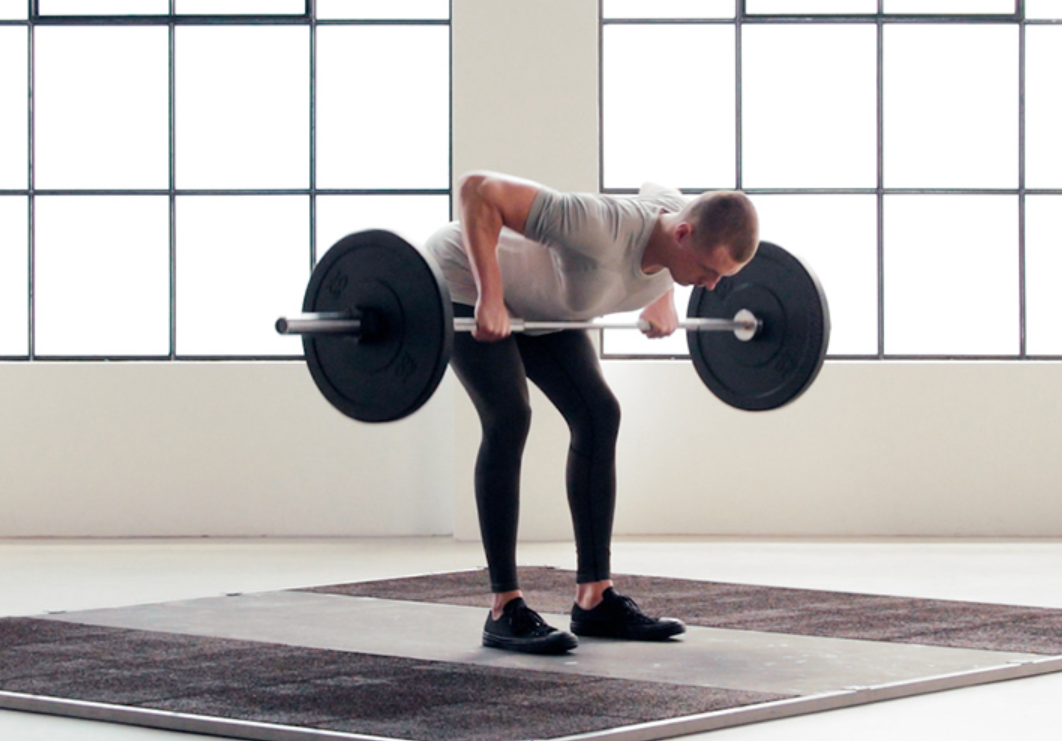
Before we jump ahead of ourselves here... let me clear things up a bit. This is a variation of the barbell row, and you can perform both workouts in an almost similar fashion.
However, with the pendlay row, you only move the bar and the arms, and you have to put the bar on the floor after each completed rep.
Glenn explains how this workout got its name, and explains how it varies from the barbell row in this video.
This helps to avoid static work for the lower back and the core area, as you would with the barbell row.
With that out of the way, let’s get started with the pendlay row;
Step 1: Stand in front of your bar with the feet at shoulder width apart
Step 2: Hinge your hip and lean forward.
Step 3: Grip the bar in an overhand grip
Step 4: Without moving your upper body, row the bar up towards your abs or chest. Go as high as you can, even as far as the bar touching your body if you so wish.
Step 5: Slowly lower the weight and set it on the floor.
That is one rep right there.
You can repeat for as many reps as you so desire - you should stick to a proper form and pick weight that you can control. Speaking of the weight, you should also factor in the weight of the bar, too.
And not just for pendlay rows, the same goes for pretty much every other weight lifting workout. Lucky for y'all, I have previously discussed bench press bar weight, deadlift bar weight, trap bar weight, EZ bar weight, and even the smith machine bar weight as well.
With that out of the way, let's get back to performing the pendlay row.
This video shows how it's done;
How to Master the Pendlay Row

To master this workout, it's important to focus on proper form and technique.
By setting up correctly, engaging your core muscles, pulling the bar towards your chest with control, and gradually increasing intensity, you can effectively target your back muscles and see significant improvements in strength over time.
If you want to impress your gym buddies with some sweet pendlay row skills, then here are a few things you should get good at.
The Stance
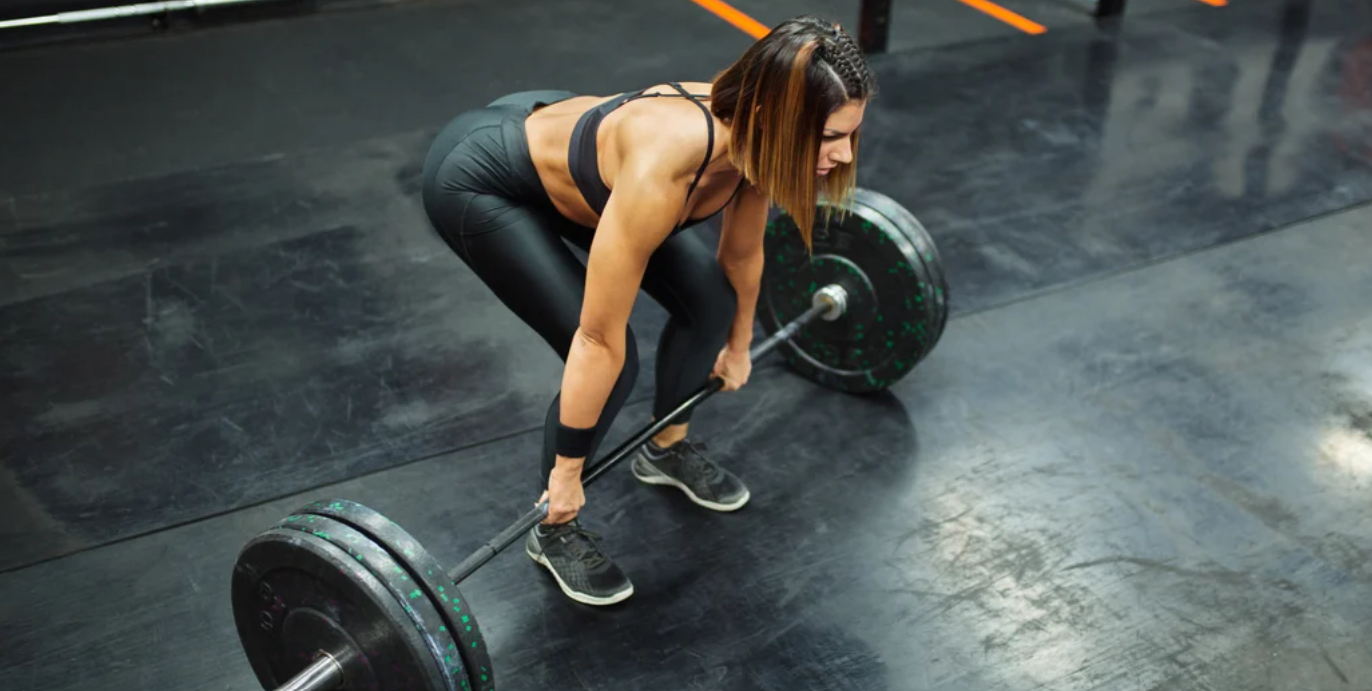
Proper stance is crucial when performing the Pendlay Row, similar to other row exercises like the T-bar Row or Rear Delt Row.
Besides standing tall in front of your barbell, you also need to have your knees slightly bent, your shoulders in a vertical orientation with your hips, and maintain a neutral position for your head and neck.
Engage the Key Areas

To pre-tension, the important areas like the hips, shoulders, and core, take a deep breath at the top of the move and exhale before you begin lowering to pick the bar.
For the Bend…
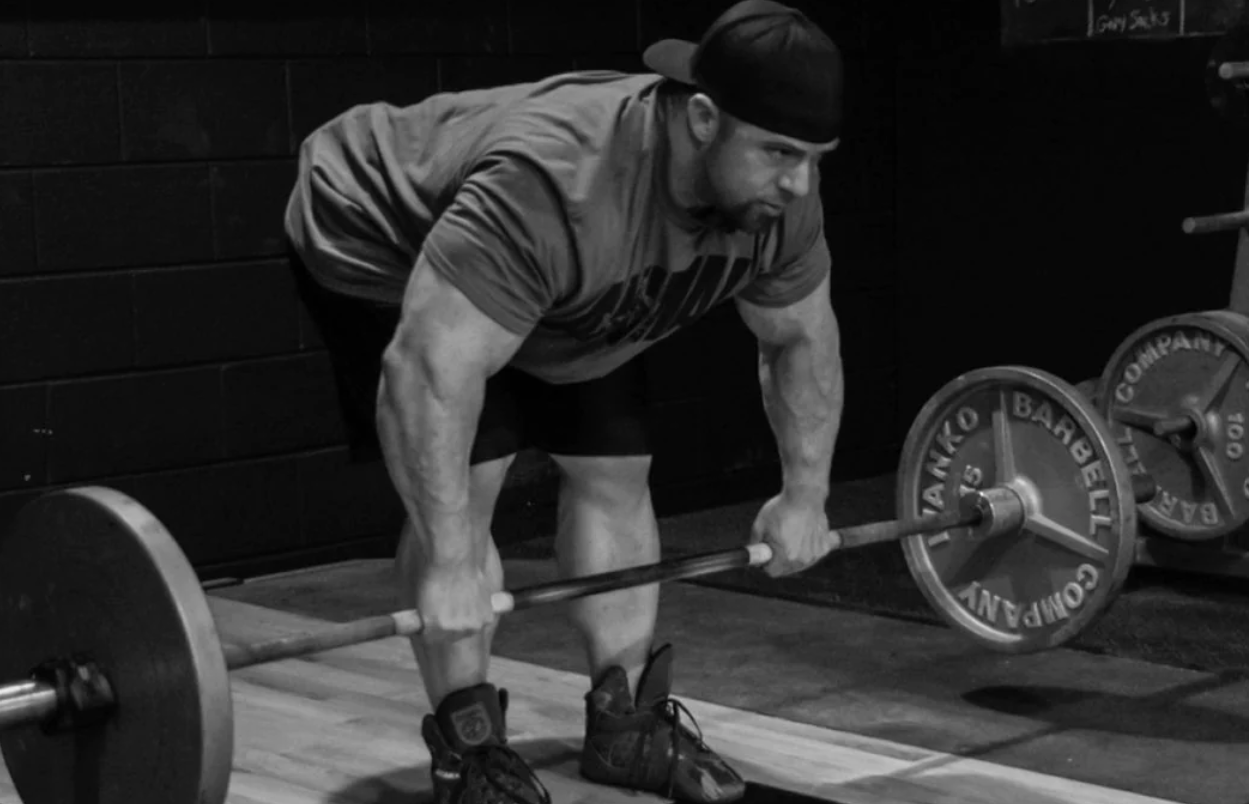
Start by hinging your hips as you bend them and the knees to lower yourself to pick the bar. At the point of picking the weight, you should have your shins vertical and the chest parallel to the ground.
Grabbing the Bar
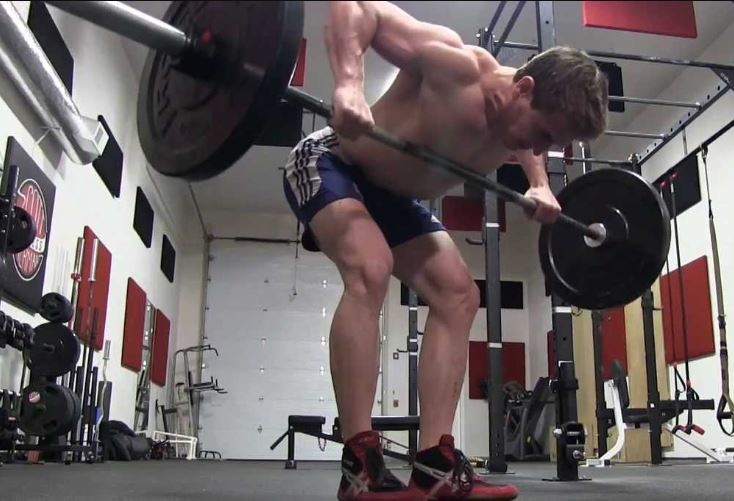
For the pendlay row, it’s best to grab your bar using an overhand grip. Then rotate your shoulders outward to engage the back muscles – with the weight still on the floor.
This is where the move starts.
3,2,1… Lift!

To initiate the row, squeeze the lat muscles to engage them as you pull the bar upward. You will mostly be using the lats and arms here.
Make sure the elbows go slightly above your back and the upper arms align with your body as the bar edges closer to your lower chest.
During the Row…
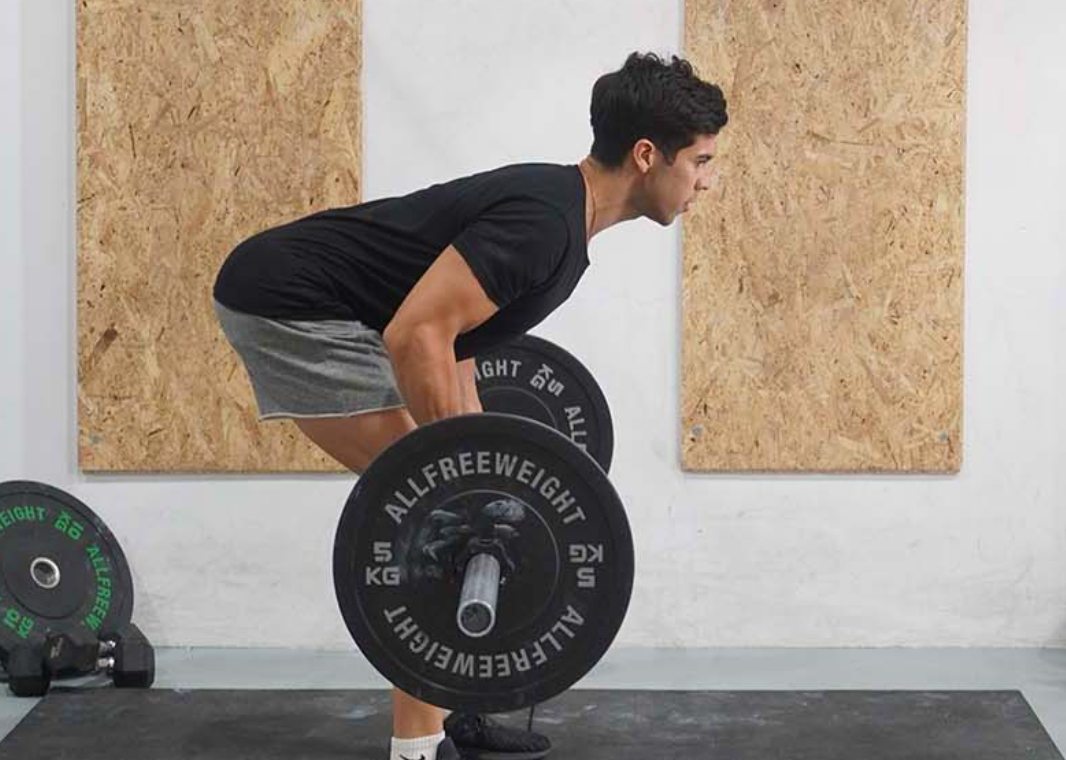
Keep the chin tucked through the entire move, and distribute the weight evenly while digging into the floor with the feet to have a solid grip and stability.
You should bend your elbows slightly so that your arms remain long to the sides.
In a controlled motion, lower the weight to the floor, all the way till the weights make contact with the floor, and pause slightly before starting off the next rep.
Benefits of the Pendlay Row
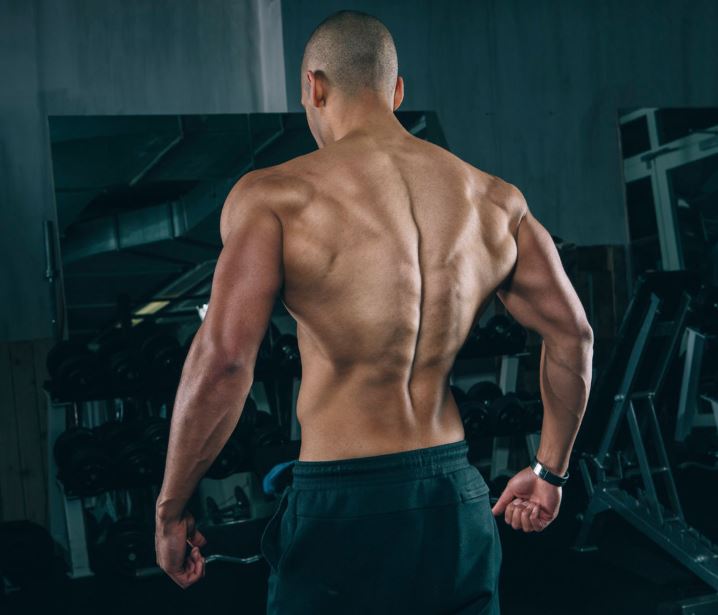
Now that you know how to do the pendlay row and do it right, it’s time to see what you stand to gain.
Is the pendlay row worth it?
Turns out it is…
It’s the Workout for a Stronger, Rounded Back
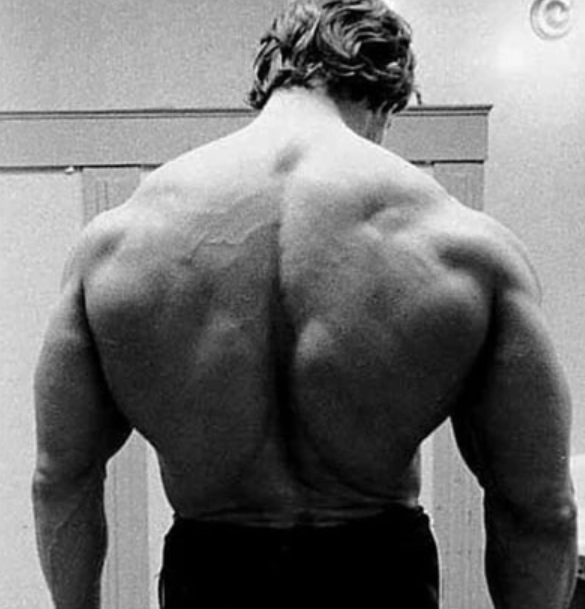
This workout ranks among the best exercises that recruit the muscles in your upper and lower back.
So yeah, whether you want to build a stronger core or a rounded back for aesthetics, this is the workout to go for. Heck, it even hits some of the hardest back muscles to target.
It’s Good for Other Lifts and Compound Workouts

The pendlay row helps build strength, back stability, and the explosiveness you need for other lifts that require bursting the weight off the ground – talk of deadlifts, cleans and power cleans.
Besides, this workout works on muscles used in tactical barbell program and compound exercise as well, the likes of lat pulldowns, seated row, deadlifts and chin ups among others.
The Versatility can’t get any Better

While in most cases pendlay rows are performed with an overhand grip, you can also switch things up with an underhand grip.
And you don’t have to stick to using the standard bar, you are free to use short barbells or even throw a pair of dumbbells or kettlebells in the mix.
If you often perform underhand dumbbell rows, or dumbbell pullovers, there's a good chance you already have a set of dumbbells lying around.
Good Pendlay Rows Mean Better Posture

A strong back will give you the strength you need and make you look more menacing, but it also comes in handy for both sports and daily life activities.
Then there’s an aspect of proper posture that comes with strong back muscles that is very beneficial for sports and workouts while helping achieve the right form and prevent injuries.
Pendlay Rows Muscles worked

As I promised earlier on in this post, I will take you through the muscles that you can work with pendlay rows.
And there’s quite a handful of them.
Latissimus dorsi
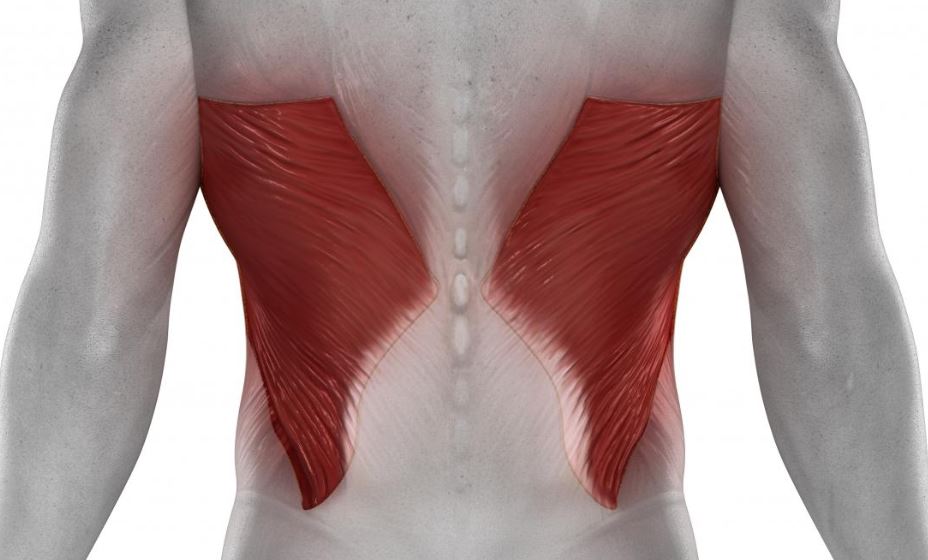
Also known simply as “lats”, latissimus dorsi muscles are thin, triangle-shaped muscles spanning almost the full length of the back.
This slab of muscle, which is usually grouped into upper and lower lats, helps with several movements like scapular depression and flexion of the upper arms.
They are mostly recruited when you perform a pulling motion during indoor rowing and cable pull-ins.
Spinal erectors

The spinal erectors are muscles responsible for stabilizing your spine as you bend over, especially since you will be slightly hinged overall through the movement.
When well built, this muscle group comes in super handy during robust deadlifts and other workouts that require picking weights off the floor and pulling workouts like t-bar row or cable row.
Hamstrings
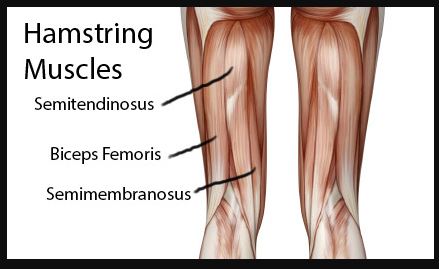
While the legs don’t move during the pendlay row, some muscles in them are also recruited. The hamstrings are one such muscle group, since they work isometrically, offering you support as you bend over during the pendlay row.
It might not seem like much, but with a substantial amount of weight or reps, you can bet this muscle will get hammered to the max.
You can also target other muscles with this workout, but these are best divided into two;
Primary Muscles
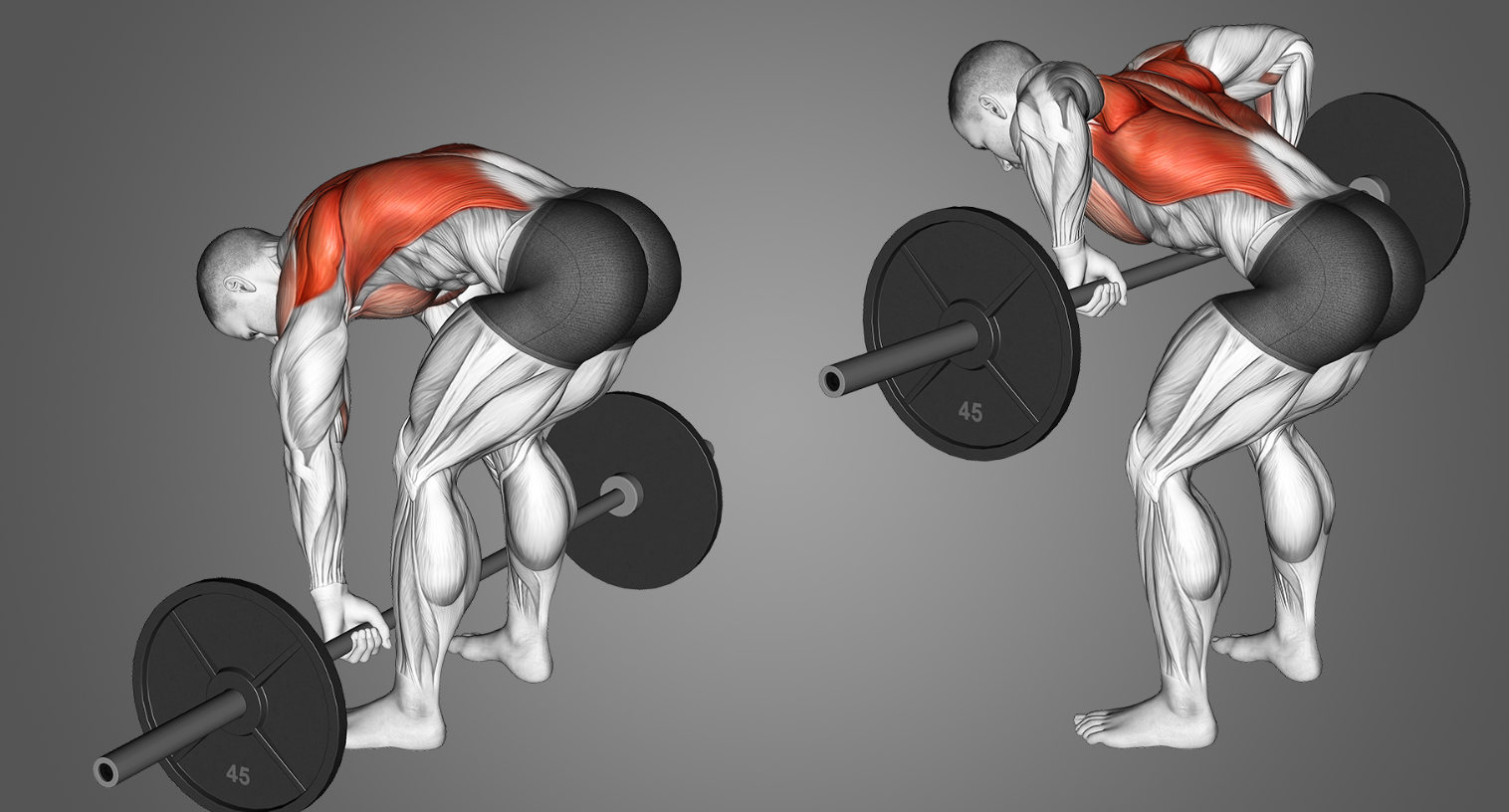
The primary muscles worked with the pendlay row;
- Trapezius
- Lats
- Rear deltoids
Secondary Muscles
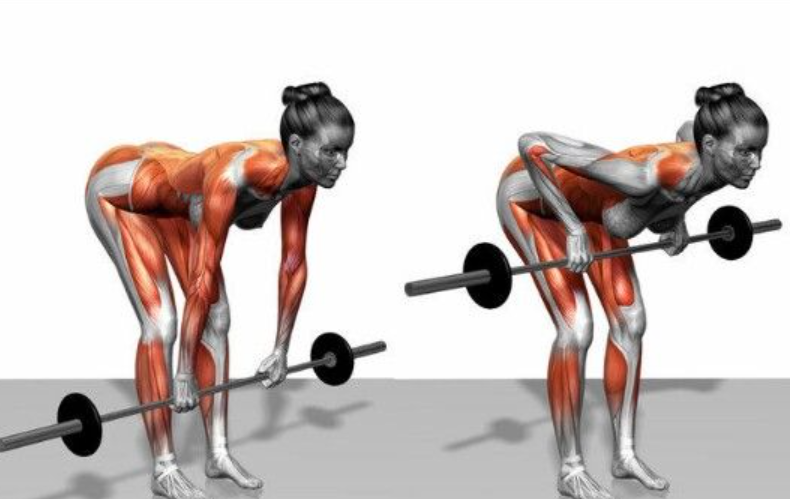
On top of the primary muscles above, this workout also targets the following secondary areas;
- Lower back
- Biceps
- Forearm flexors
- Rotator cuff
Tips to Get the Most out of Pendlay Rows
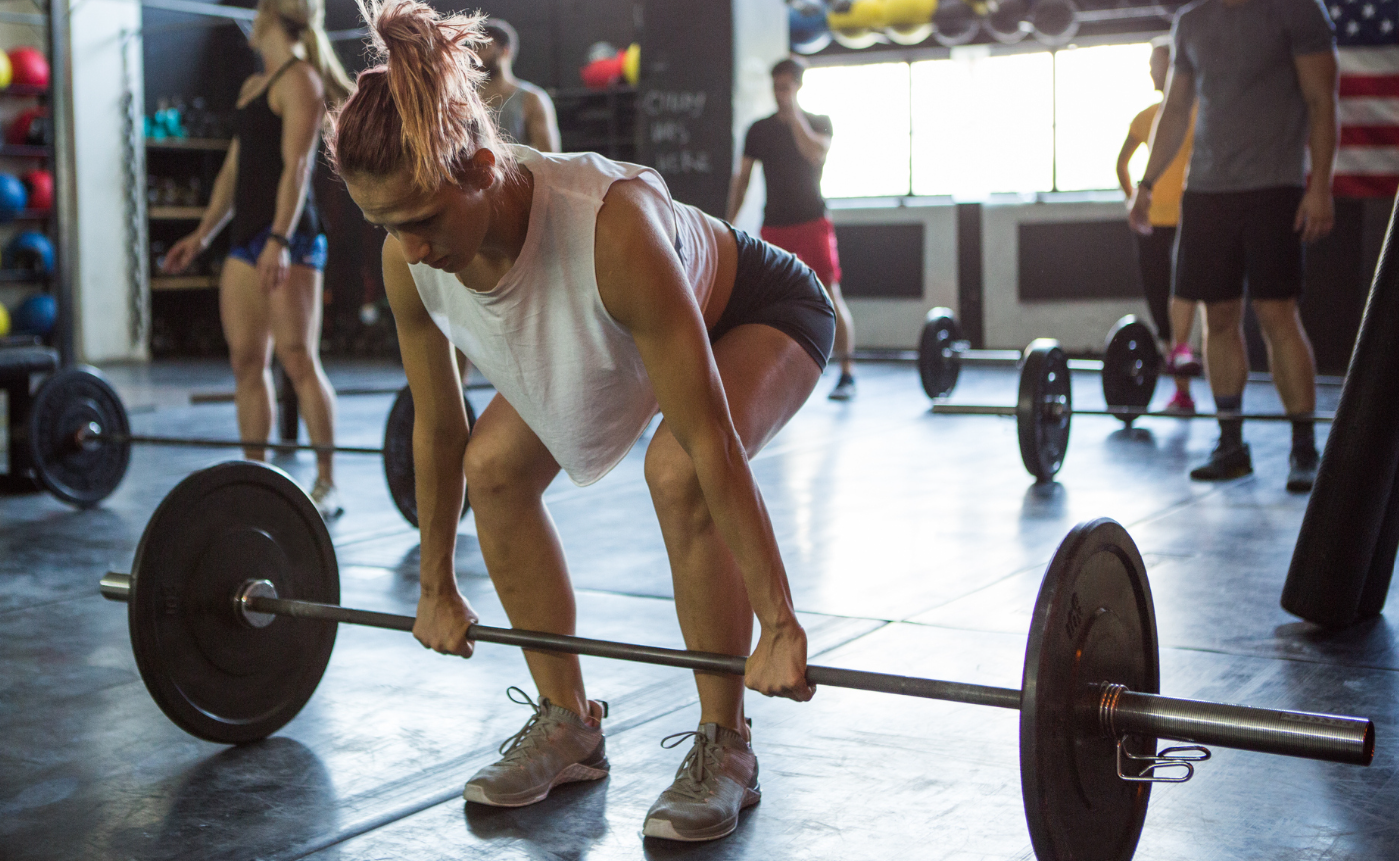
I hinted at tips to get the form right above, but what are the best ways to get the most out of your pendlay rows?
- Are pendlay rows for you? First things first, figure out whether you’re in the right form and shape to do the workout. For those with pre-existing conditions like back or knee pain, consult with a physician before doing this workout for your safety.
- Master the form and technique. Of course, form and technique are of utmost importance, do not rack up on weights until you have the form down pat. You can practice with an unloaded bar or dumbbell to have the best start.
- Pick the right weight. Even when you start using weights, make sure to use enough weight that challenges your muscles, but at the same time, allows you full control throughout the move.
- Warm-up is just as essential. The need for a good warm-up is often overlooked as lifters focus on all the other factors. Make no mistake. Without the right warm-up, you risk cutting back on your performance, or worse yet, injury. Stretch, do cardio on spin bike or treadmill, and/or anything else to get your muscles fired up enough for the workout.
- Rest and recover. All said and done, make sure to take enough time to rest and allow your muscles to recover and repair. Additionally, incorporating a theragun into your post-workout routine can help in muscle recovery and relaxation. That’s what this is all about, to push and shock your muscles hard, then let them recover, repair, and load up on energy for the next session. Around 24 to 48 hours should suffice for this, so do not go all out doing this workout 7 days a week.
Reps, Sets & Weight Choice for Pendlay Rows
Here's a simple breakdown of the sets, reps and weight levels you can stick to for different pendlay row goals;
Goal | Sets | Reps | Ideal Weight |
|---|---|---|---|
For Beginners | 2-4 sets | 6-10 Reps | Light |
For Muscle Mass | 3-4 sets | 8-15 reps | Moderate |
For Endurance | 3-4 sets | 15-20 reps | Light (but challenging) |
For Strength | 3-5 sets | 4-8 reps | Minimal |
Common Mistakes Beginners Make During Pendlay Row Workout
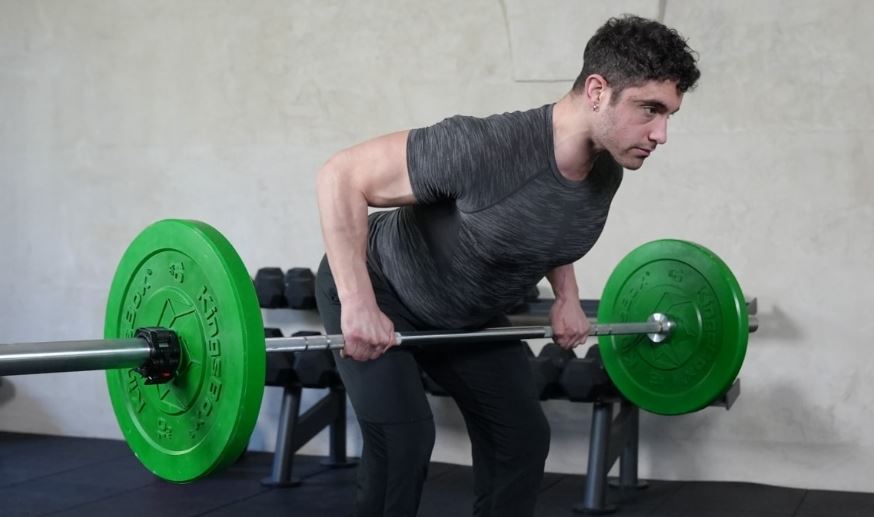
At first glance, the pendlay row seems straightforward enough.
Don’t let this deceptive simplicity fool you, some beginners make small but costly mistakes that you should avoid at all costs.
Here are some of them:
Letting Your Torso Shift at an Almost Vertical Angle
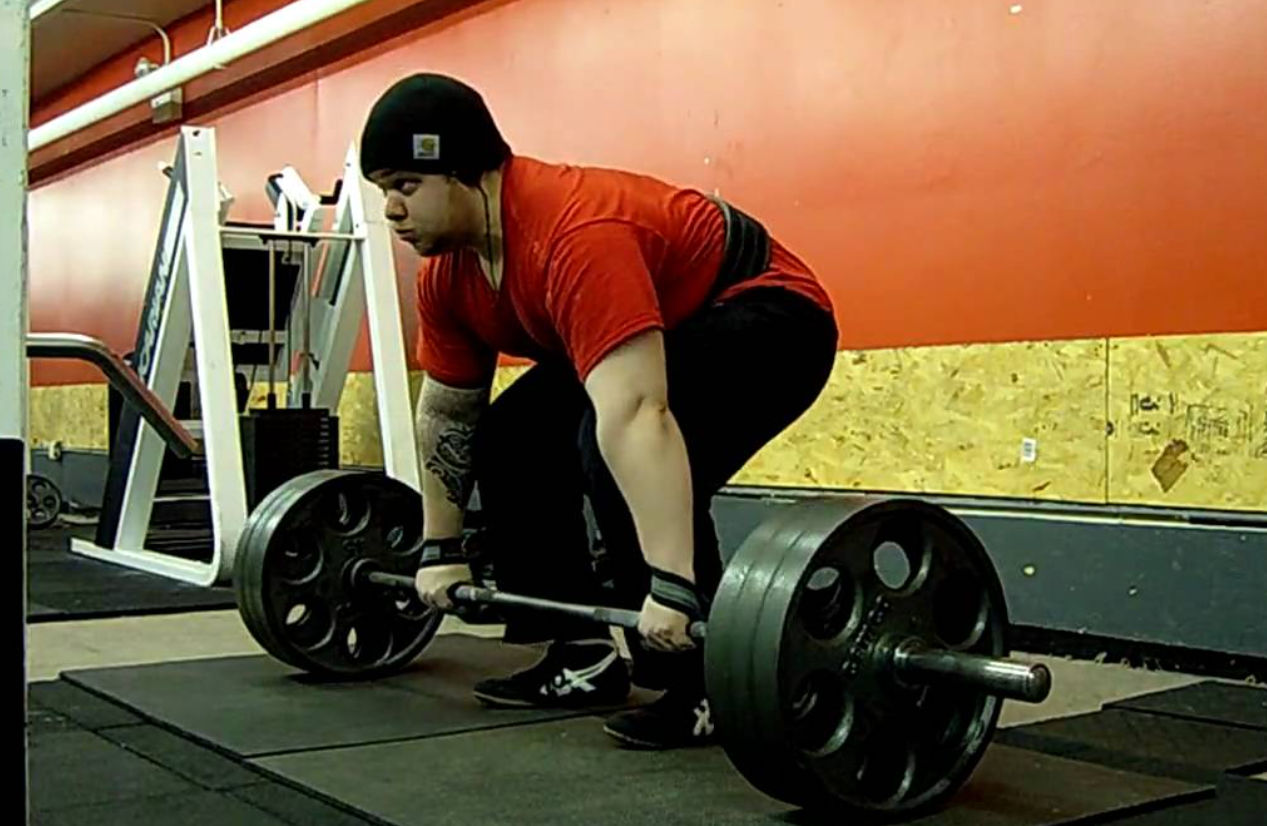
As is the case with most other workouts, the form is the first thing most people get wrong when going into the pendlay row.
Most lifters have a hard time maintaining their back within a 45-degree angle during the lift.
This could mean two things; you’re either lifting too heavy, or you got the form wrong from the get-go. If your back is becoming too vertical, lower the weight or practice on the form before using any weight at all.
Letting the Bar Hit Your Knees

While the mistake above can be quite hard to spot, this one is easy to figure out, and yes, it’s a painful lesson that I learned the hard way.
If your barbell is rubbing on or hitting your knees as you lift, there’s something wrong with the starting position.
A quick fix here is to start by standing a bit farther from the bar and ensure your shin stays parallel to the floor as you go for the bar and during the row itself.
But remember, you still need to ensure the bar is as close to your body as possible for the best joint mechanics.
Again, you can try with an unloaded bar until you find that sweet spot where everything aligns perfectly.
Using a Lot of Momentum
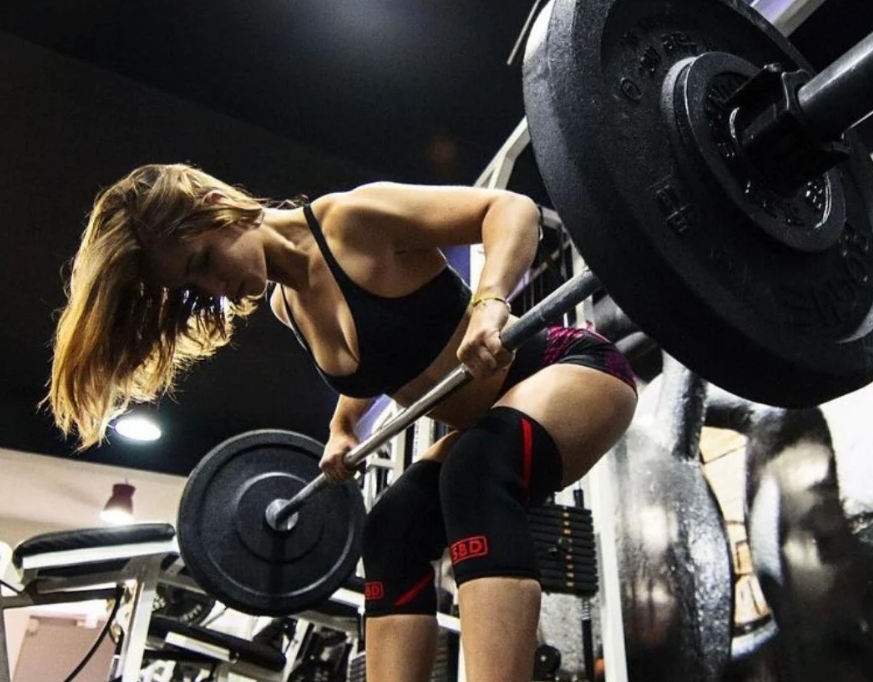
Momentum can be your biggest nemesis in most lifting and rowing workouts. Sure, a little momentum isn’t all that bad to kick things off.
However, you need to move the weight in a controlled manner all through, and more so when lowering it back to the floor.
Do not let gravity trick you into just letting the weight drop, work against it for the best gains.
Some Disadvantages of the Pendlay Row

Great as this workout is, it also has its fair share of downsides that aren't much of a deal breaker, but still a bummer for some.
Here are several of them;
It Requires an Advanced Level of Flexibility
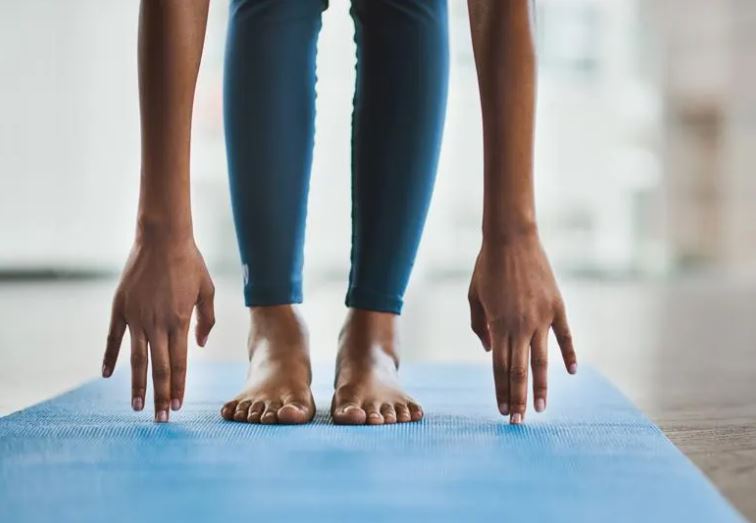
This might not be the workout for you if you lack flexibility in the hip and hamstrings.
Since you have to bend to start the move, your hips are particularly taxed quite substantially. Lack of flexibility will make the workout feel hard, or worse, result in injury.
Not Very Great for Back Hypertrophy

The pendlay row also doesn’t offer as much hypertrophy as you can get with other back exercises.
Although the forceful pull employed in the move is fantastic for strength gains, it lacks the muscle overload responsible for massive lean muscle growth.
It Can be Hard!
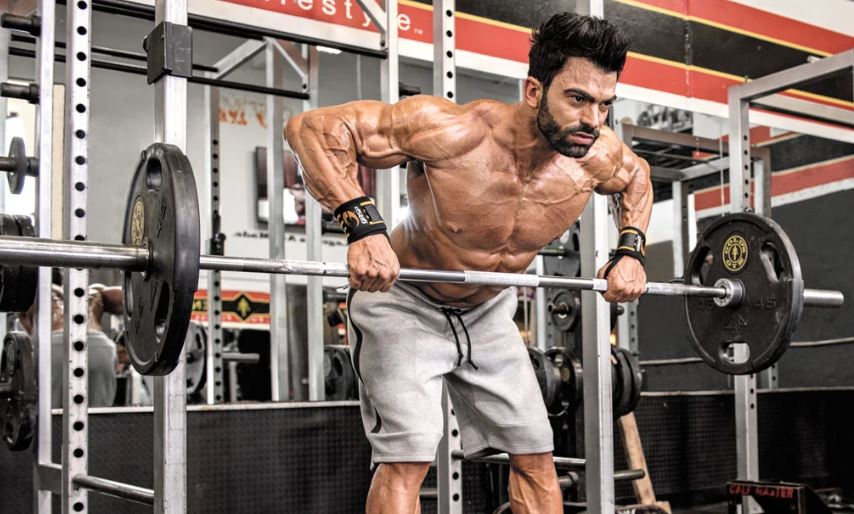
That’s right, although this workout might seem rather easy, the fixed starting position sets it in a league of its own as far as difficulty.
Yes, it’s even more challenging than the likes of the barbell row. This also makes it not very ideal for beginners since the learning curve can be quite steep for some.
Pendlay Row Alternative Exercises

As effective as the pendlay row is, there are also other workouts in the fitness space that make for a perfect alternative.
Whether you want to try a new exercise, or the pendlay row is proving too hard for you and you wanna try something different, here are some of the best workouts to try out.
Deadstop T-Bar Row
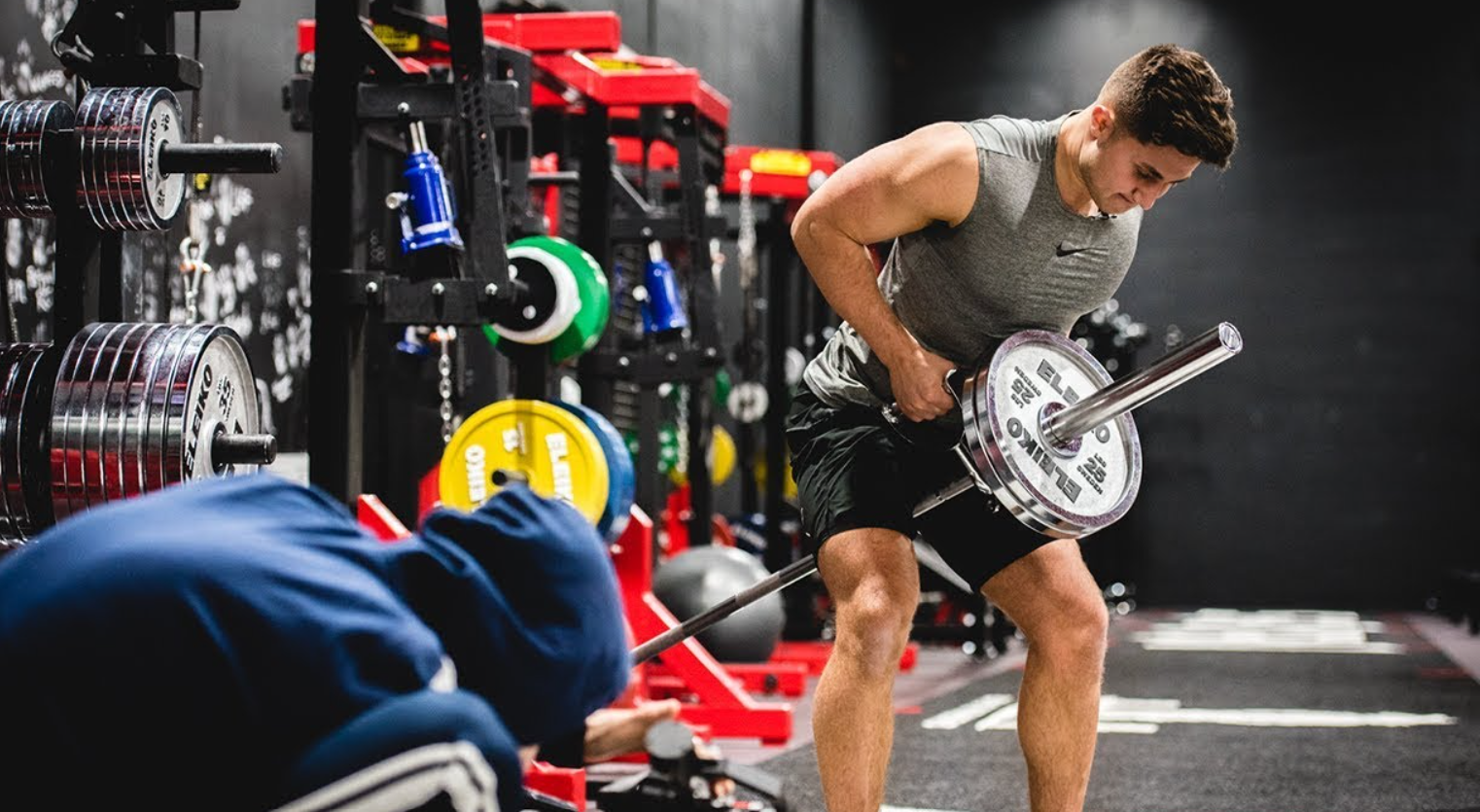
This exercise is an absolute darling for those looking for dense and thick back muscles, the same as you work with the pendlay row.
Regardless of whether you opt for the deadstop T-bar row, seated row, or Pendlay row, you can expect to reap almost similar benefits from these exercises.
How to Perform Deadstop T-bar row
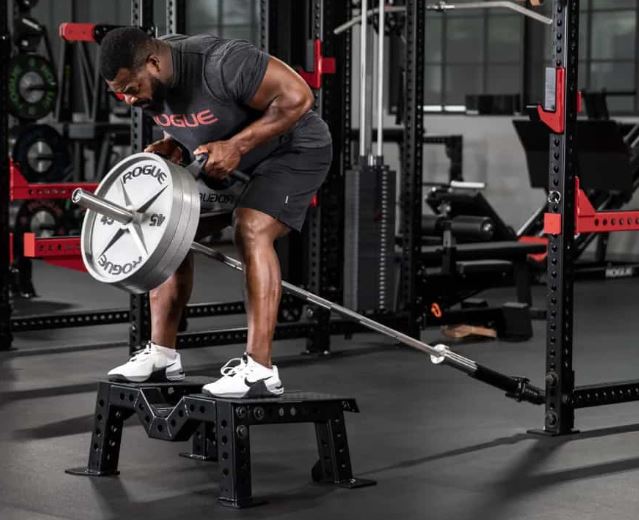
- Assume a stance with your feet hip-width apart. Try closing the armpits as you grab the bar to build tension
- Sweep those elbows back as you lift
- Keep your chest held up and squeeze the shoulders during the lift towards the lower chest
- Then lower the weight back to the ground before breaking tension before starting the next rep
- That is one rep. Repeat for the desired number of reps.
- Remember to have a static starting as well as between the reps
Here is how to do Deadstop T-Bar Row
Dead Stop Chest-Supported Rows
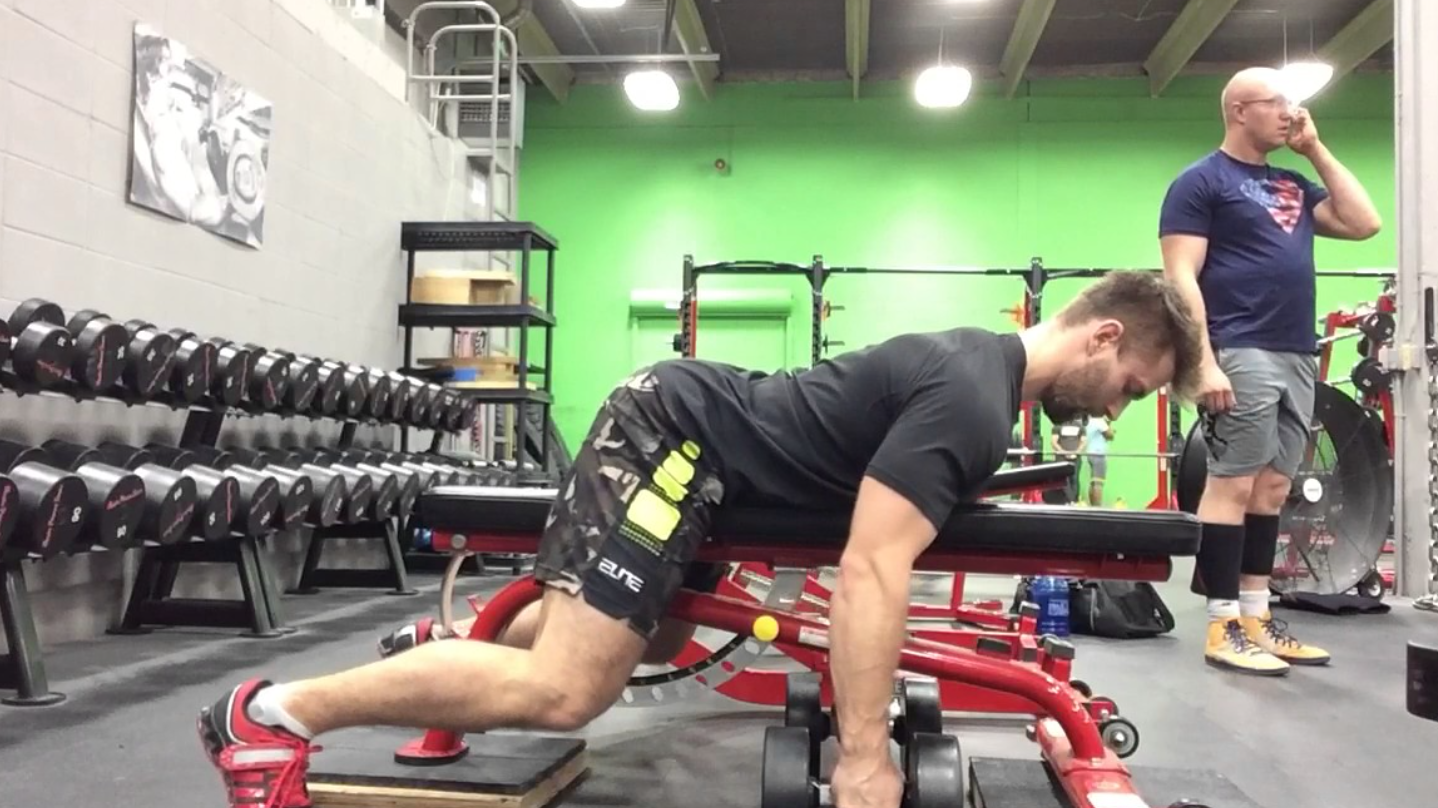
This row is excellent for isolating back muscles, especially for those with lower back issues who don’t want to expose the muscles in this area to the brunt of a workout.
For this exercise, have blocks or a solid platform set up on either side of an incline adjustable bench – the surface will be useful for resting your dumbbells between the reps to lose tension before regaining it for the next rep.
How to perform the dead-stop chest-supported row

- With a dumbbell or some weights on the platform on each side, lie down on a bench with the legs bent (ever so slightly) and the heels slightly off the ground.
- Grab the dumbbells, wrapping your thumb around the handles. For ladies and rookies, using dumbbells for women does help as these are lightweight and manageable.
- Sweep your elbows backward as you row the dumbbells to be in line with your lower stomach.
- Next, lower the dumbbells till your elbow extends fully then place them on the platform or the floor.
- Repeat for the desired reps.
Here is how to do dead-stop-chest-supported row
Rack Pulls
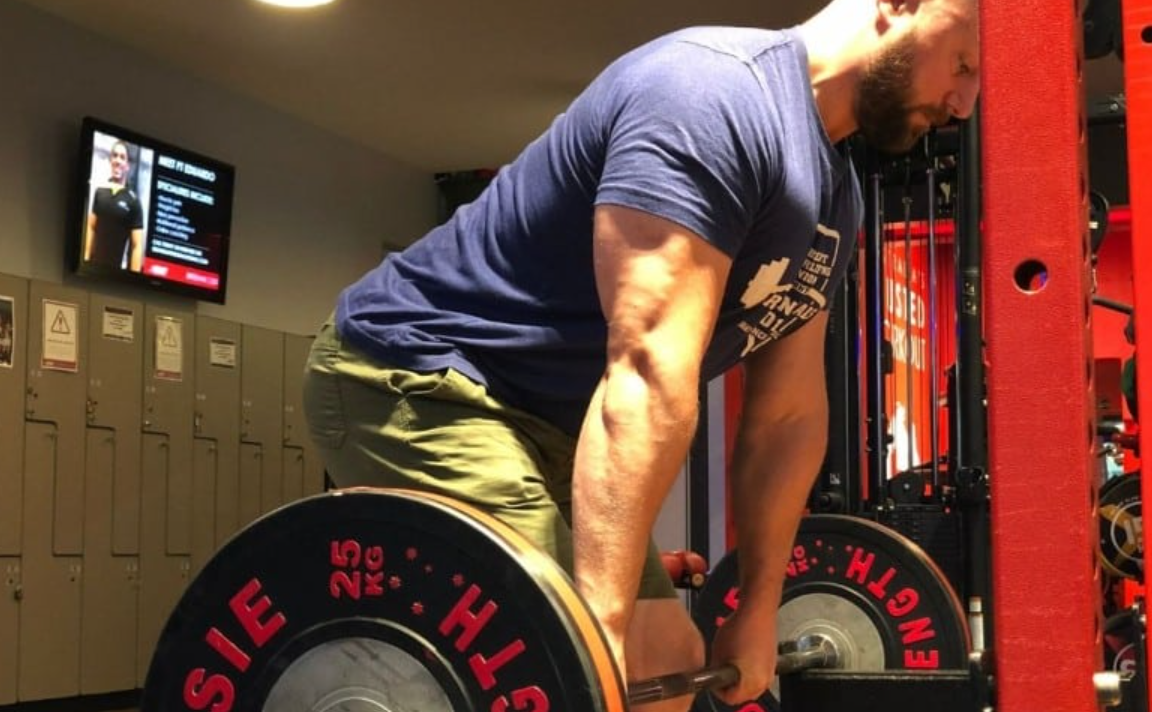
The rack pull differs from your average deadlift in that the move during rack pull stops just shy of your mid-shin area.
The workout proves fantastic for building back muscle mass, which earns it a spot among other pendlay row alternatives in this post.
How to perform rack pulls
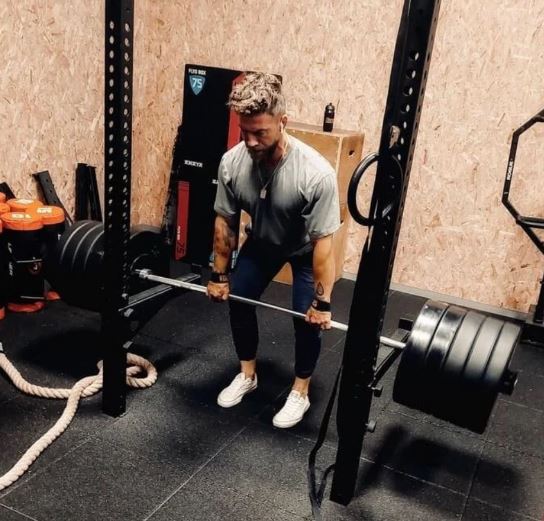
- Start by setting the pins on your rack (this can be a squat rack, one of those power racks with a lat pulldown or even a small power rack) at a height that aligns with your mid-shin area.
- Grab the bar at a slightly wider than your thighs or a tad wider if you so wish
- Build tension on your upper back by squeezing the shoulder blades, and then load the hamstrings and glute muscles
- Dig into the ground with your feet for stability and lift the weight
- Lower the weight back to the starting position to complete the rep.
Here is how to do rack pulls
Barbell Rows
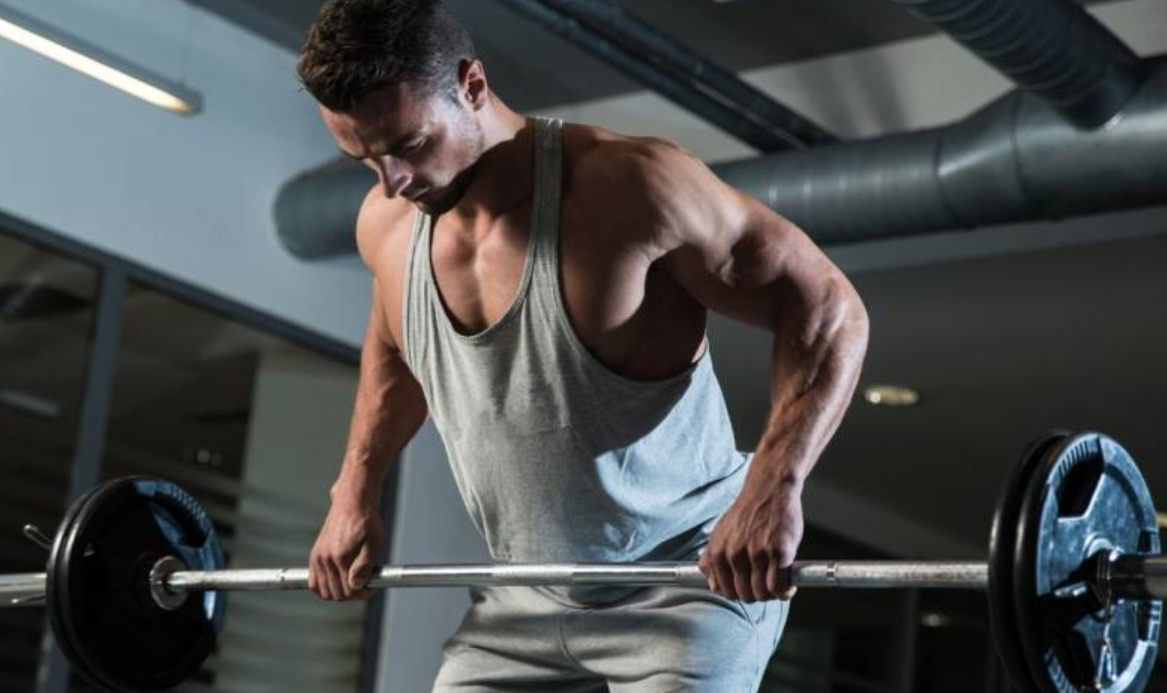
The barbell row is as closest to the pendlay row as you will ever get. So much so, that some confuse one for the other, and it’s claimed that the pendlay row is borrowed from the barbell row.
With the barbell row, however, you have to be under tension for longer, and it helps work the back muscles pretty much as the pendlay row would.
How to perform the barbell row
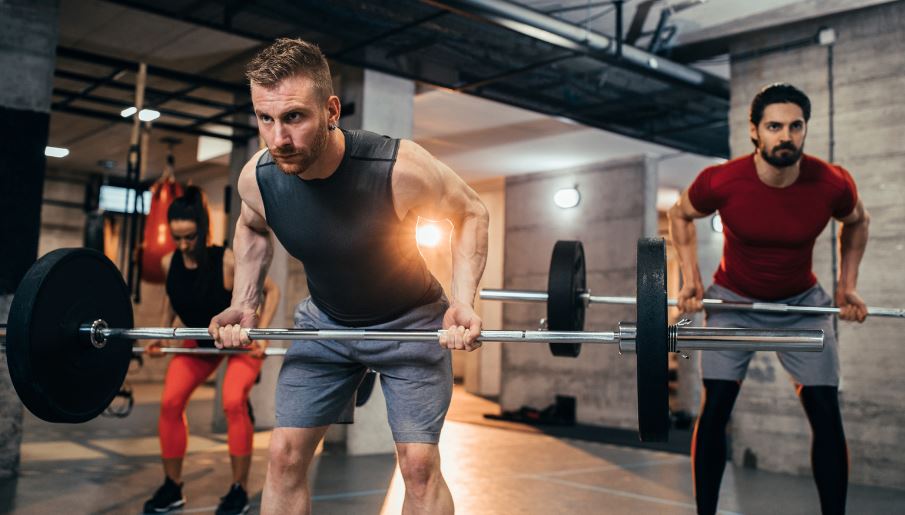
- Just like with the pendlay row, you start the barbell row with the feet at hip-width apart
- Keep the width of the grip at shoulder-width, but you are free to widen it some if you wish.
- Sit back as far as having your torso almost parallel to the floor and shoulders over the bar with your elbows fully extended
- Pull the bar up towards your abdomen or lower chest area
- Next, lower the bar in a controlled motion until your elbows are fully locked out
- That is one rep.
Here is how to do barbell rows
Deadlifts
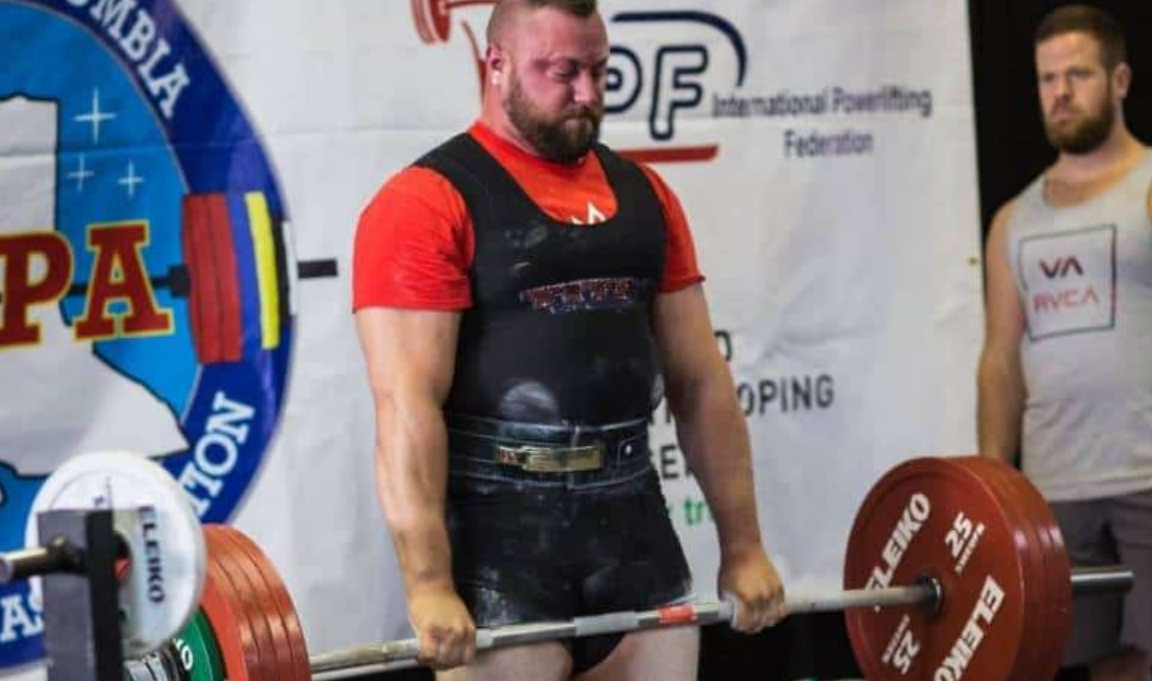
Ranked among the big 4, the deadlift is a mean punisher, but still a favorite for many fitness freaks.
This workout helps improve your power output, more so in the back muscles, while also enhancing both density and thickness.
How to perform the deadlift
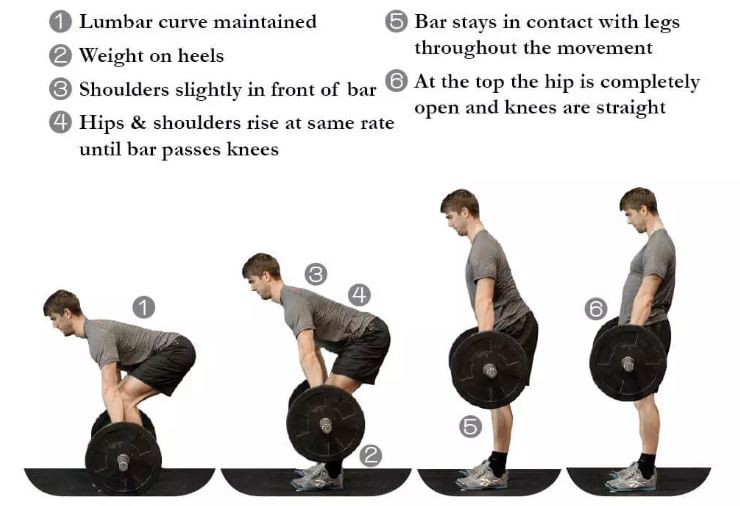
- Start with your feet hip-width apart
- Engage your midsection and push your hips back as though you’re sitting back.
- Squeeze the shoulder blades together, and hold your chest forward while driving your traps down
- Stretch out your arms to reach for the bar and then sit back with it
- Next, rise and stand with the weight
- At the top of the move, squeeze your butt muscles, quads as well as hamstrings
Here is how to do deadlifts
Mistakes Commonly Made for Each Alternative Exercise

Most (if not all) of these workouts are tactical exercises. Thus, they tend to get a tad complicated for beginners and thus it’s not unlikely for one to end up doing something wrong somewhere along the move.
Here are some mistakes to be on the lookout for;
Deadstop T-bar row; Beginner Mistakes
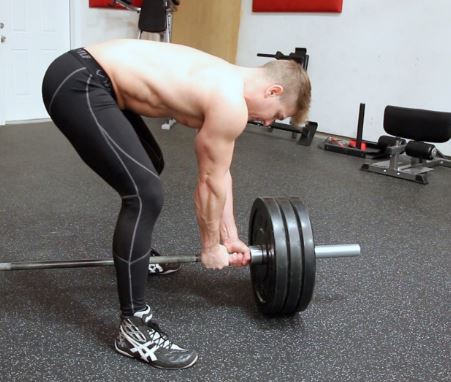
When doing the dead-stop t-bar row, be keen to avoid the following mistakes;
Not bending the knees during the move
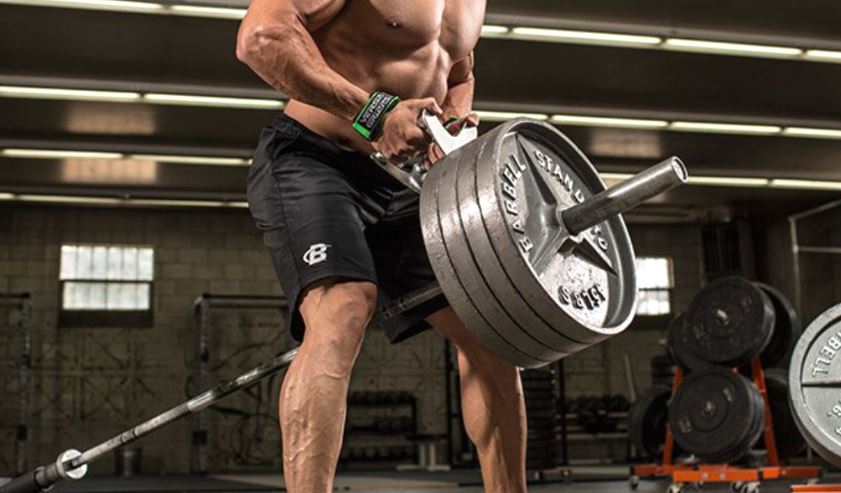
It’s not unlikely to see budding gym rats not bend their knees as they lift, and sometimes end up injured.
But as it turns out, injury isn’t the only thing to be worried about if you’re making this mistake often.
You also lack that solid base that could otherwise allow you to lift more weight, so even if you don’t end up injured, you could be leaving gains on the table.
Bending the knees pushes your hips behind you, placing the bar right below your body’s center of gravity rather than to the front.
Wrong posture
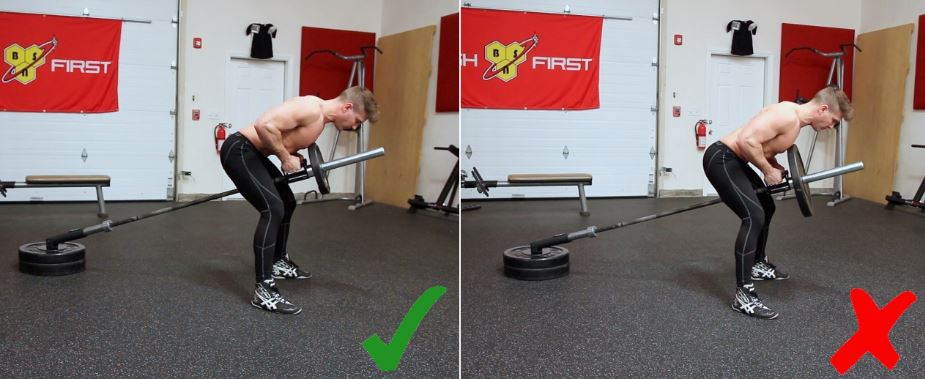
I can’t stress enough how crucial proper form is for any exercise, and this t-bar row is no exception.
Without maintaining the right form during this exercise, you will be placing excessive tension on both your neck and the upper spine.
To stay safe, maintain a neutral position for both the neck and spine to avoid straining the muscles in these areas.
Failing to bend far enough

Most people struggle to look at themselves in the mirror during this move. This means they end up holding their head up and making the mistake we have mentioned above, or they fail to bend over far enough.
You need to bend over enough to have your body parallel to the floor unless you are seeking to target your upper back more, in which case you should hold your back more upright.
Rack Pulls; Beginner Mistakes
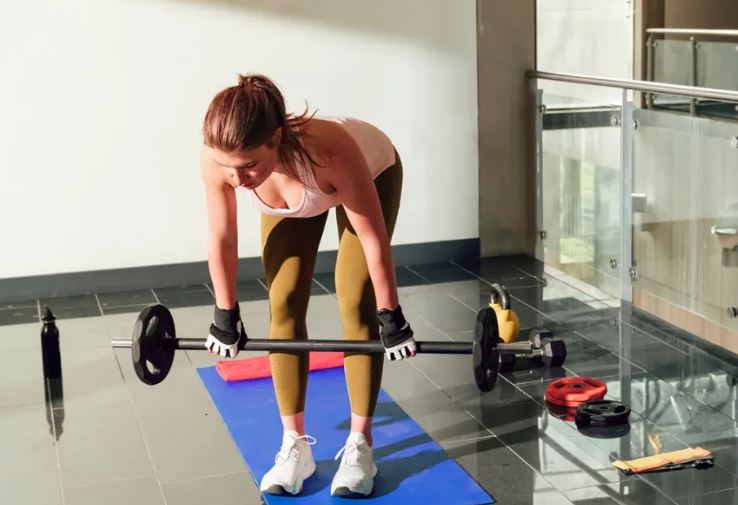
When doing rack pulls, be mindful of these and other common rack pull mistakes and avoid them as they may chip away at your gains, or worse, cause you harm.
Sweeping hips forward
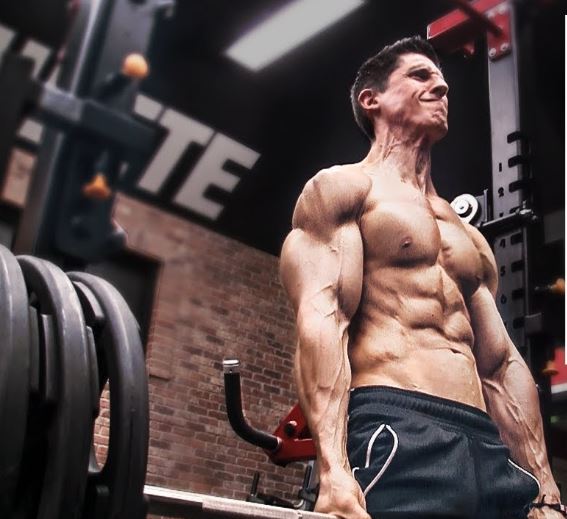
It’s very easy to feel tempted to thrust the hips forward at the top of rack pulls move to work your quads, hams, and glutes a bit more.
On the contrary, instead of working for you, this can instead throw your form out of whack, and worse yet push your back out. Whatever you do, keep the entire move steady and controlled to avoid ruining your form or risking injury.
Bending the knees outwards

Another mistake beginners are prone to is having their feet facing outward, with the knees bent at a slight angle – like they are performing sumo or goblet squats.
This might not be a problem for advanced lifters, but as a beginner, you might not be fit enough for your knee joints to absorb the pressure that comes with this stance. Maintain a forward stance until you are fit enough to try new tricks.
Lack of proper form
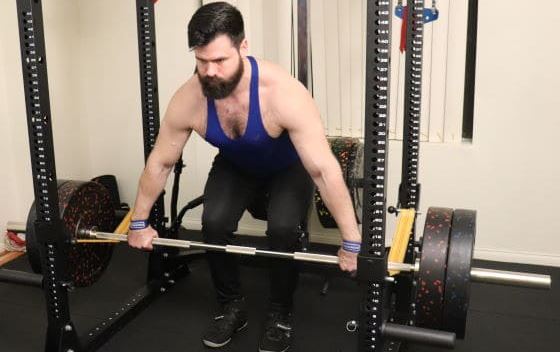
Beginners also often find themselves doing this workout with poor posture, which can adversely affect one’s lower back and lead to strain. The best way to go about this is to maintain a straight back and keep your feet at shoulder width apart through the move.
Taking on loads of weight

The small range of motion can let you load more weight, but that isn’t to say you should. We both know the risks that come with lifting more than you should for any lifting exercise – your form surfers, and potentially you end up injured.
Barbell Row; Beginner Mistakes

The barbell row too can be a bit confusing for beginners and often most of them end up making these errors;
Too much momentum

Some workouts require a bit of momentum, but for some, it can turn out to be your undoing – the barbell row is one such exercise.
This exercise calls for a very strict execution to reap as many gains as possible. Using momentum means skimping on the intended gains as you will be swinging the weight around rather than recruiting the muscles as you would with a controlled movement.
Also, you should have total control over the eccentric phase – do not just drop the weights.
Rounding the back

This is more so a problem for those who want to target the lat muscles, which is a rather elusive muscle group and becomes even harder to target when you round your back.
Instead, consider holding your lower back in an arched posture, while keeping your mid and upper back in a more neutral position and holding the chest boldly.
Lack of shoulder blade movement
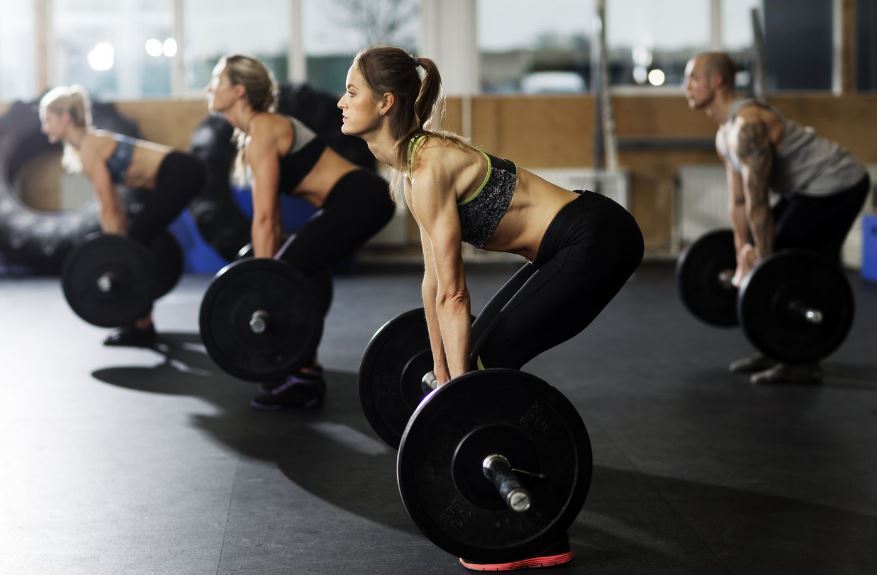
Performing rowing movements without moving your shoulder blades means one thing, you are missing out on the full range of motion.
Instead, consider moving your shoulder blades along with the arms during the move to not only hit the maximum range of motion but also to reap as many benefits as you can from every rep.
Deadlift; Beginner Mistakes
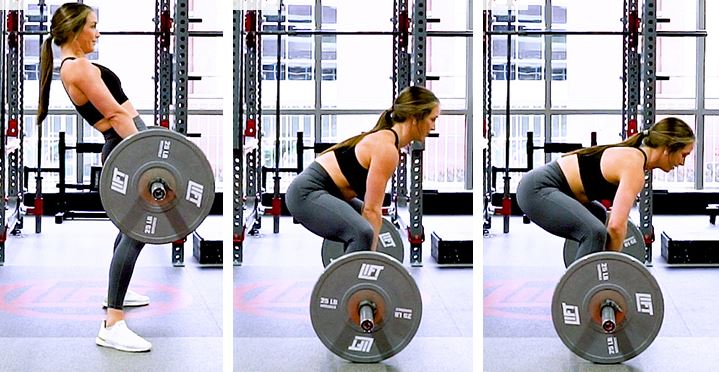
Deadlifts are some of the best workouts you can do for power, strength, and mass, but one that is easy to get wrong. Some of the mistakes beginners make during this workout include the following;
Lack of proper warm-up
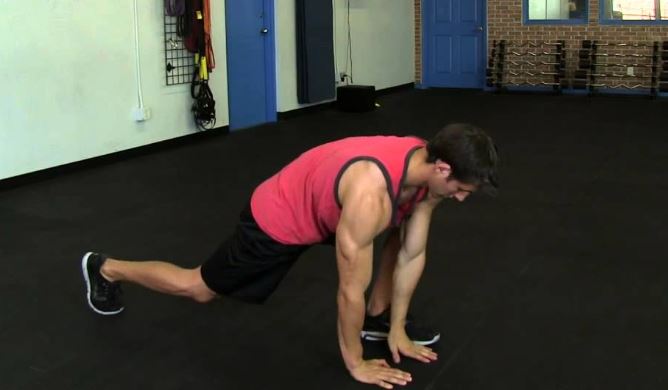
Not doing enough warm-up can derail your efforts for just about any workout. But this is a mistake you don’t wanna make with such intense exercise as this one.
A few minutes of walks or running for a while on the treadmill just ain’t enough.
You need to do moves that not only bring your muscles to life but ones that also help with your mobility. This helps with more than just making the most of the workout; it also enables you to avoid injury.
Bending your back

Beginners are often prone to “round the lumbar” when performing deadlifts, which simply means a curvature of the spine. Throw that together with the significant amount of weight involved in this exercise, and you have a recipe for disaster.
To stay on the safe side, you can easily avoid this improper form by holding your chest straight and elevated when grabbing the bar.
Also, when lifting, it’s best to dig in with your feet to build the lifting strength from your legs and not the back.
Improper foot positioning

Sounds like a brainer, yes. But the truth is, the position of your feet helps determine how well you can pull off a proper deadlift.
The trick is rather simple actually; do not stand too far back from the bar, as this could mean overloading your lower back during the lift. Instead, position your feet close enough to the bar such that half of your foot goes under the bar and at hip-width apart.
Other deadlift mistakes
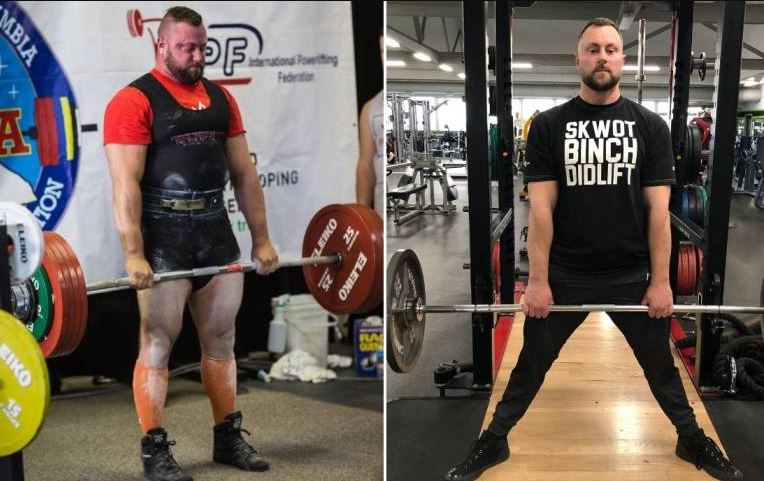
Other mistakes to watch out for during deadlift include the following;
- Contracting shoulder muscles
- Wrong positioning of the hips
- Wrong gripping and movement of the bar
Muscles Worked with Each Pendlay Row Alternative Exercise
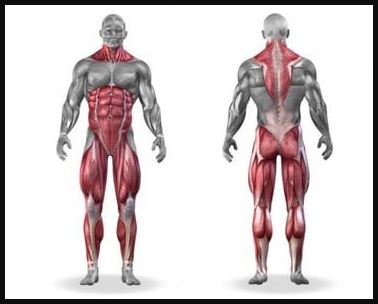
Now that you know what the different pendlay row alternative exercises are, and how to do them right, let’s take a glance at the muscles you’ll be targeting with each of these;
Deadstop T-bar Row Muscles Worked
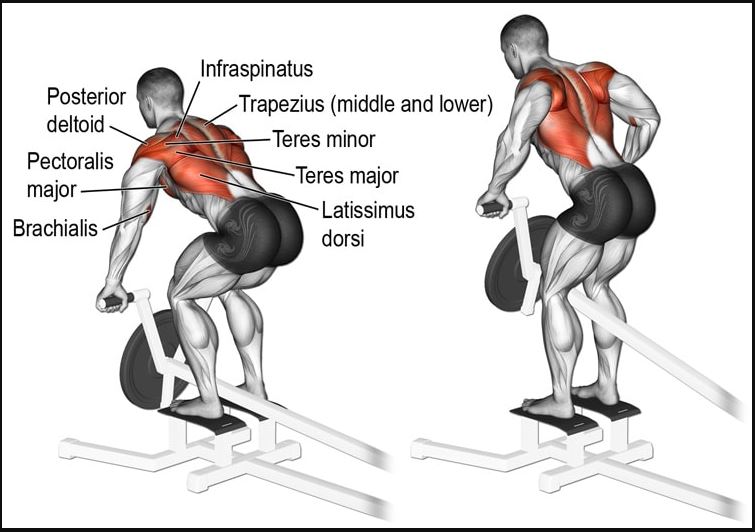
The deadstop t-bar row helps target the following muscles;
- Lats
- Erector spinae
- Teres major
- Biceps
- Core
- Hamstring
- Glutes
Deadstop Chest Supported Rows Muscles Worked
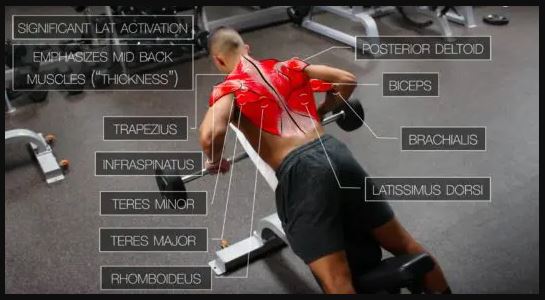
The deadstop chest-supported row helps work the following muscles;
- Rear deltoids
- Rhomboids
- Latissimus dorsi
- Upper back
- Traps
- Biceps
- Forearms
Rack Pulls Muscles Worked
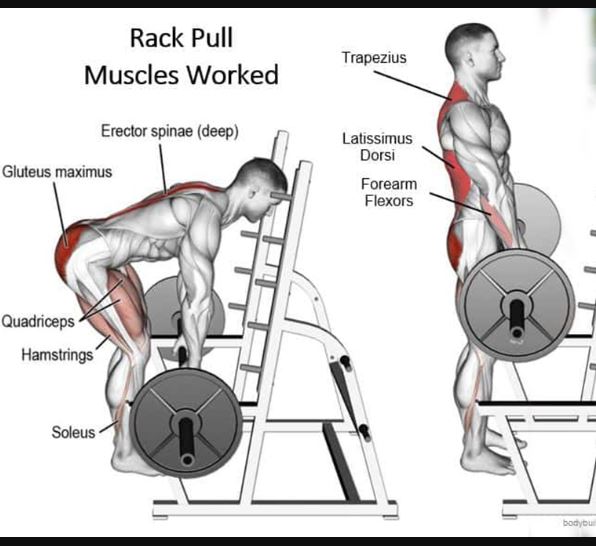
Rack pulls work a variety of muscle groups, including the following;
- Traps
- Lats
- Erector spinae
- Forearm
- Hamstrings
- Glutes
- Quadriceps
Barbell Row Muscles Worked
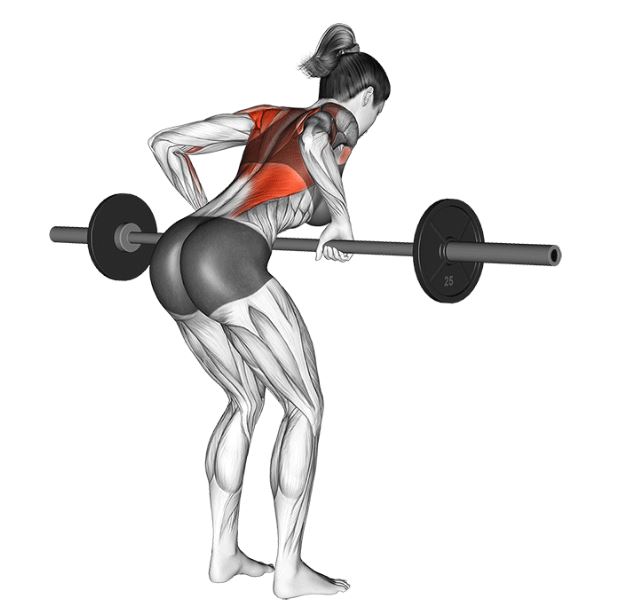
Barbell rows are great for targeting a wide variety of muscles;
- Lats
- Mid and lower traps
- Rhomboids
- Posterior deltoid
- Biceps
- Teres minor
- Brachioradialis
- Brachialis
- Erector spinae
Deadlifts Muscles Worked
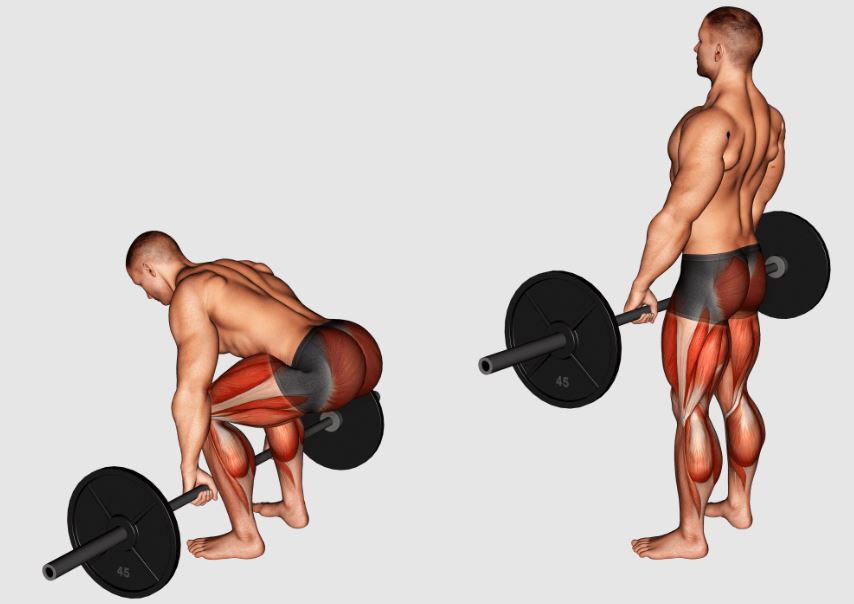
Deadlifts help work a long list of muscles in both the upper and lower body
- Upper and lower back muscles
- Quads
- Core
- Hip flexors
- Glutes
- Hamstring
Pendlay Row Alternative Exercises Reddit
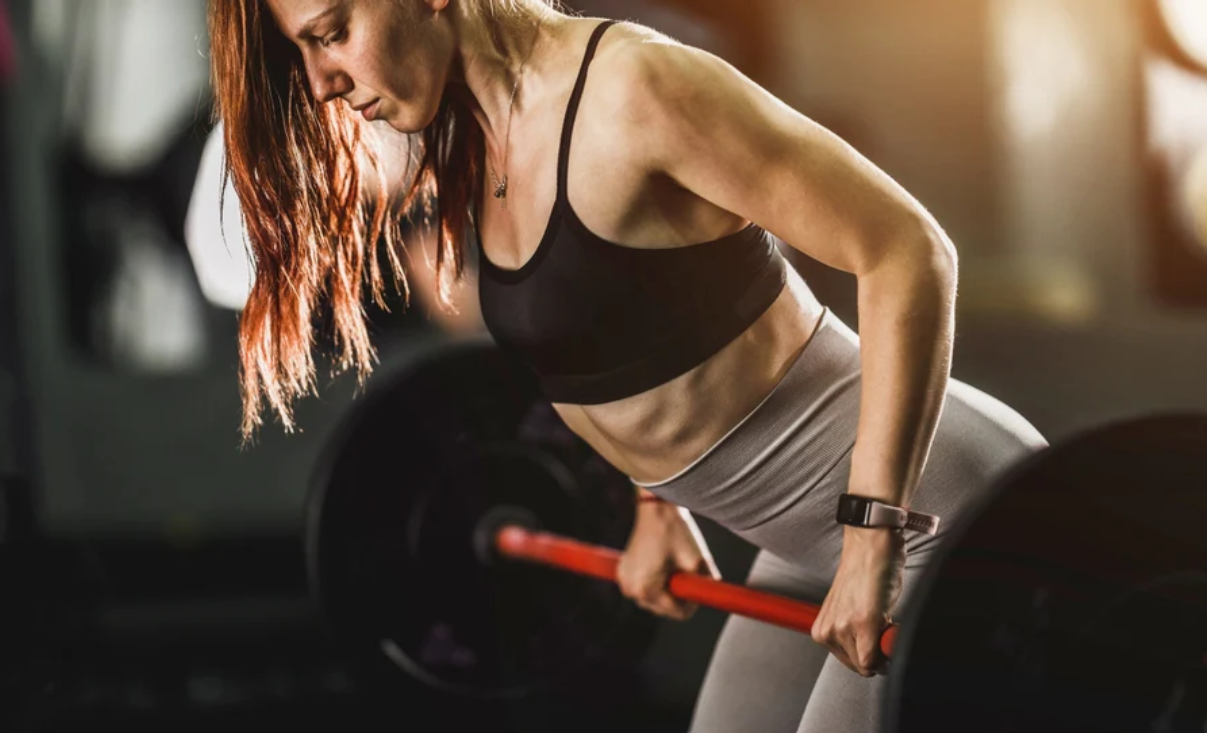
The alternatives I have listed above are just a few among a galore of the many options at your disposal.
There are a whole lot more out there, and one of the best places to look is this thread on Reddit, where like-minded folks are.
You can find a whole lot more than just pendlay row alternatives, there is an all-rounded discussion going down there too.
Pendlay Row FAQs
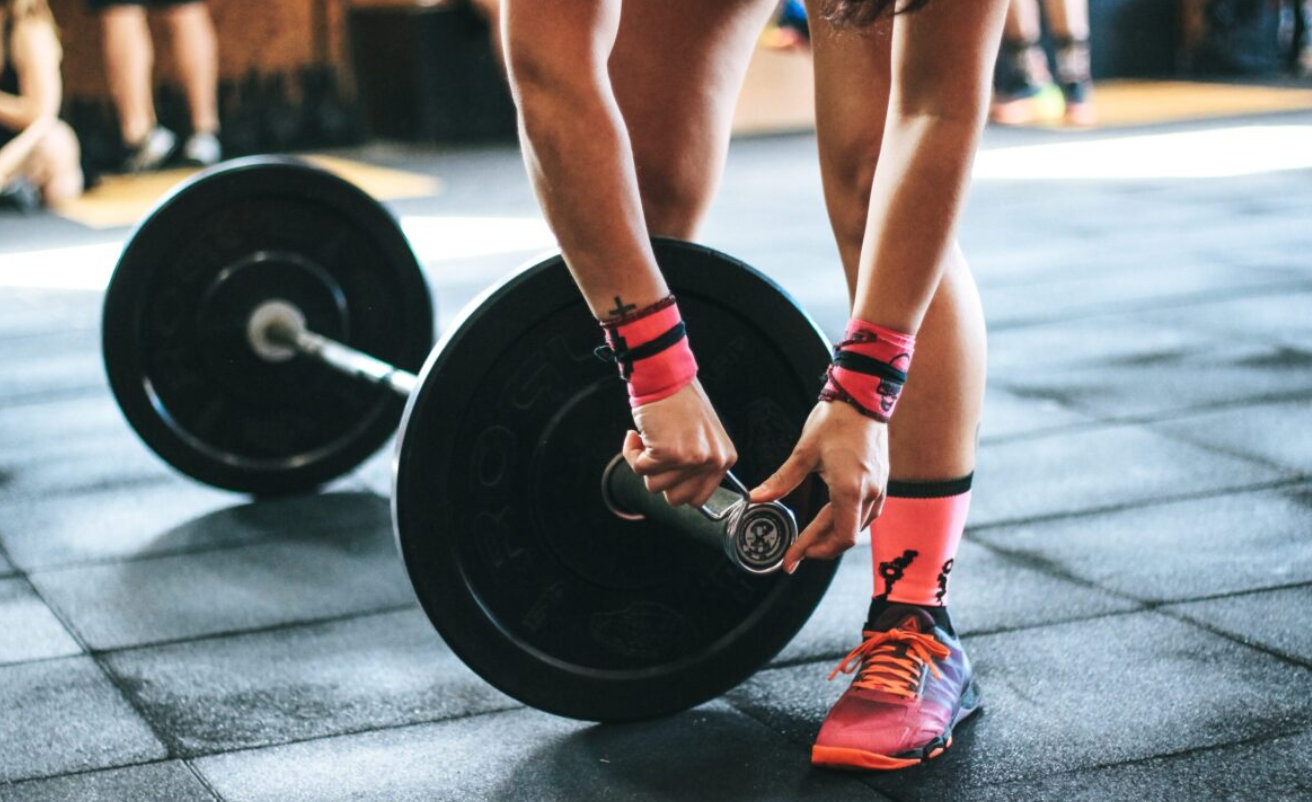
If you still have some more questions about the pendlay row, here are some more answers to help you understand this workout better.
What is the Best Grip for Pendlay Rows?
Depends. If you want to target the lat and rear delts, then go with a wider grip.
For those looking to work the biceps, a narrower grip should give you an edge. The grip choice is up to you really, but the best way is to start with a shoulder-width grip and work your way to varying grips from there.
Is an underhand grip or an overhand grip better?
Again, if you choose an underhand grip, you will target the biceps more. However, no grip is right or wrong, you can go with the grip that feels the best for you or one that works best for your goals.
Are Pendlay Rows Similar to Bent-over Rows?
To some extend, yes. What sets the pendlay rows apart is that the exercise is a bit strict where you have to keep your back flat through the entire move.
You also have to set the weight on the floor after each rep, lose tension, and start all over again.
However, that isn’t to mean that the pendlay row comes out as the better exercise, while it is great for strength and power, the bent-over row is a perfect fit for hypertrophy.
What Makes the Pendlay Row Different from the Barbell Row?
With the pendlay row, the weight (bar or dumbbell) has to start on the floor and the form is a bit strict where the back has to stay flat. The pendlay row also requires more explosive execution for more power production.
The barbell row is not only done starting on a hang position, you can also do it with different back angle orientations and a diverse range of motion.
Can I do Pendlay Rows with Dumbbells?
Yes, you can perform the pendlay row using dumbbells if you so wish. Mind you, it’s not even complicated or by any means harder than when using a barbell.
You follow the same form and procedure as the bar. Start with the dumbbells (can be kettlebells, too) in front of you, and then row them towards your chest. The only difference is, you can train one hand at a time.
But of course, make sure to pause after each rep and then start the next one.
Which is Harder, the Pendlay Row or the Barbell Row?
As far as which is harder, the pendlay row takes the win here, thanks to the fact that you have to start each rep on a dead stop. You need to be extra keen with the pendlay row to avoid losing form and risking injury.
Can I Stack the Weight on a Pendlay Row and go Heavy?
Sure you can! Since the pendlay row is an exercise to boost your strength and build on explosive power, you can go heavy on this weight if you so wish.
But there’s a way to go about than just stacking up on weights.
Go for a weight that offers the right balance; light enough that you won’t lose form, but still heavy enough to give you the desired results.
Are Pendlay Rows Worth It?

Whether you are a diehard lover of the pendlay row, or you’re out on the prowl for a workout to add to your workout regimen, this workout, and any of the alternatives we have discussed here should fit the bill.
Most of these workouts work your back and upper body, but a fair chunk of them work the lower body too.
The good thing about pendlay row is that this is an all-rounder with a shit load of benefits.
For one, it is a great exercise for back strength as well as building explosive power. It also helps fix muscular imbalances that might be lurking within. You will need this strength and power for other workouts.
Remember, be mindful of the mistakes I have highlighted above, and exercise with consistency (but still have enough rest days in between). And yes, you can bank on any or all of these exercises for fantastic results over time.
Related Articles:
- How Many Squats Should I Do in a Day to Tone Thighs?
- Goblet Squat Vs Front Squat - Differences, Which is Better?
- High Pull Vs Upright Row; Which Exercise Should You Perform?
- Renegade Row Alternatives
- Good Mornings Muscles Worked
- Single Set Training; What Is It? What Are Its Perks? Should You Be Doing It?
Resources:
- https://www.masterclass.com/articles/pendlay-row-guide
- https://www.boxrox.com/develop-a-huge-back-with-the-pendlay-row/
- https://whitecoattrainer.com/blog/pendlay-barbell-row
- https://muscularstrength.com/article/Six-Dumbest-T-Bar-Row-Mistakes-Sabotaging-Back-Growth
- https://liftbigeatbig.com/pendlay-row-vs-barbell-row/
- https://www.menshealth.com/fitness/a28494495/barbell-row-workout/
Ben Mayz
Hi there! I'm Ben, main author and chief editor at Fitlifefanatics.com. I have been obsessed with Strength Training and Fitness for 18 years now.
My passion for living a happy fit lifestyle is what made me realize that fitness is what I wanted for my future.
I went on to earn my Masters in Sports Training & Biomechanics.
My passion for Strength training & fitness and my love of helping others is what made me start Fitlifefanatics.
Here, myself, and a team of specialist aim to provide the most accurate, and actionable information possible in hopes to help foster the fitness community forward.
You can learn more about Fitlifefanatics on our About Page


